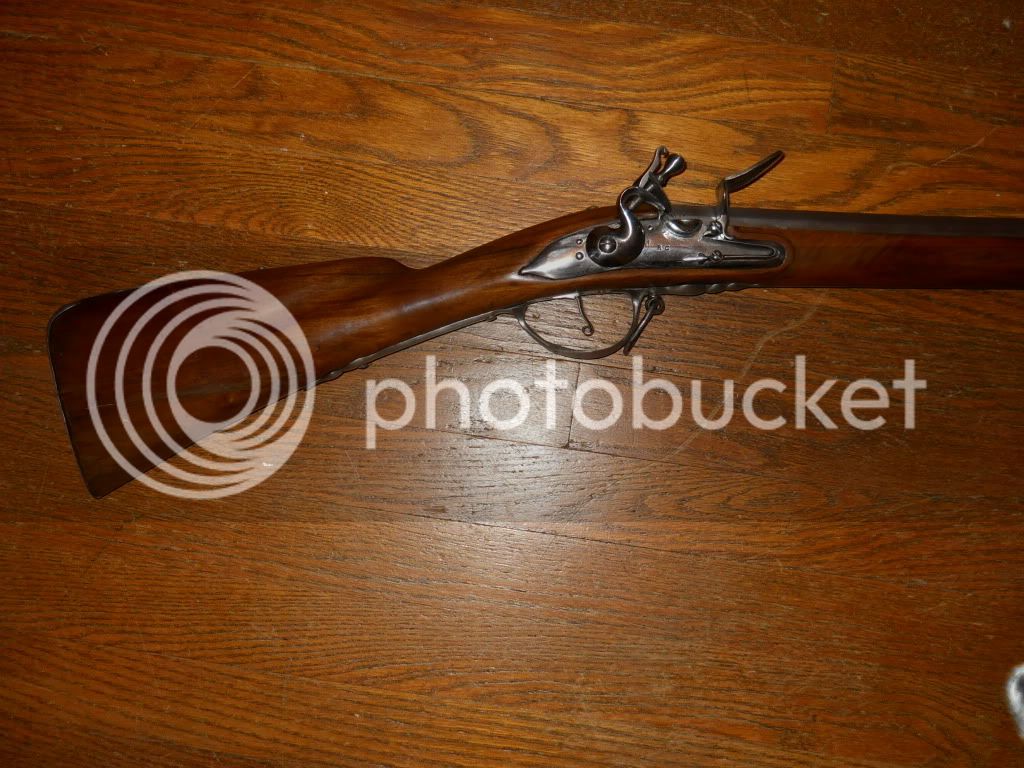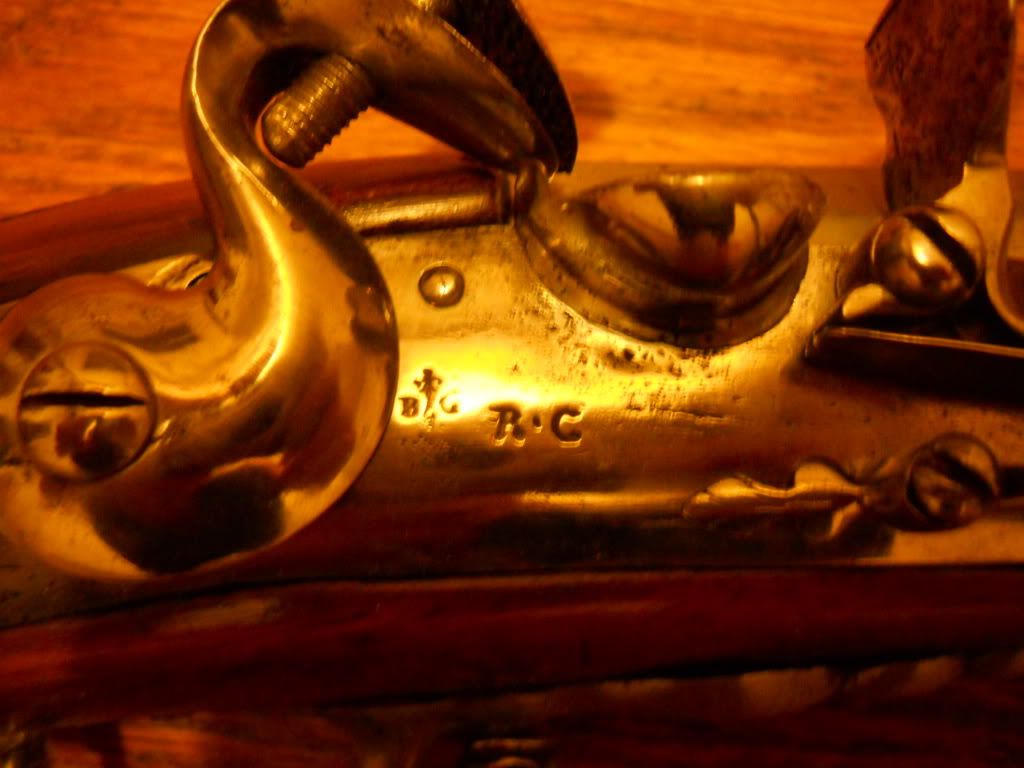albatrosdva
32 Cal.
- Joined
- Dec 27, 2011
- Messages
- 9
- Reaction score
- 0
I am new to the forum so I am posting some of my interesting guns. This musket is made before the first French standard musket model 1717. It was made by Robert Carrier of the St Etienne arsenal some time between about 1690 and 1710 when they started making the lock profile flat instead of the round banana shape like this one. Unfortunately it was cleaned back to "in the white". They did a rather nice repair of the stock back from half stock to full stock with fabrication of the barrel band and two ramrod pipes. The barrel is three stage and a little over 47" and .75 caliber. The bayonet is original to the musket and is most oddly shaped, almost like a spontoon. Early French musket






